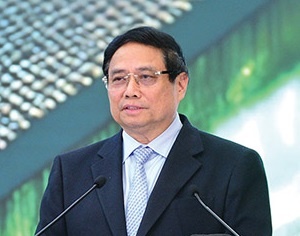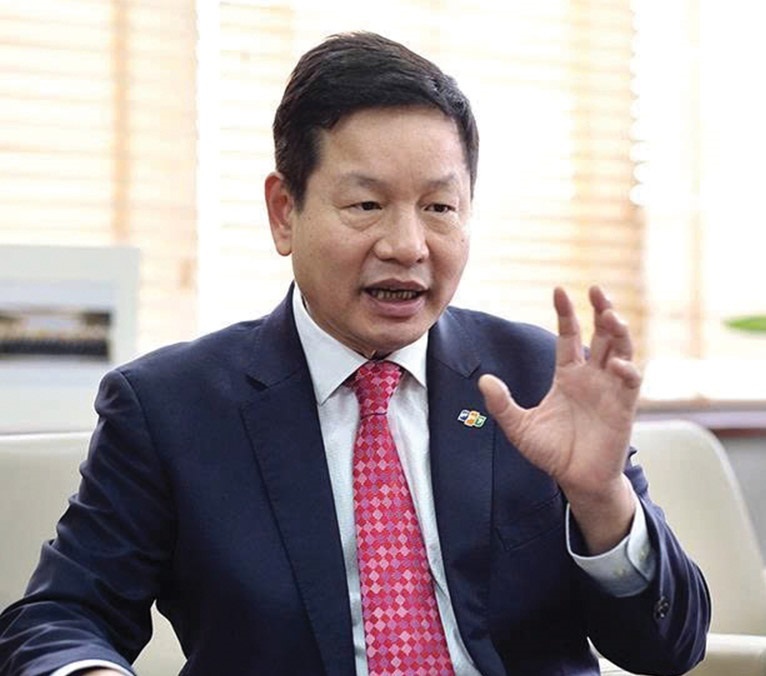Project
Investment required to exploit AI potential
Published
8 months agoon
Semiconductor production and AI are expected to become strategic drivers for Vietnam’s long-term economic development.
Participants at the 2025 International Conference on AI and Semiconductors in Hanoi pored over the current global trends while outlining how Vietnam can use its potential to turn shortcomings into innovation drivers.
 |
Suresh Venkatarayalu, senior vice president and chief technology officer at Honeywell, said that 6-7 years ago, Honeywell used to engage with semiconductor suppliers through a traditional procurement process. This was how the company made decisions and chose partners. However, the 2020 pandemic changed everything.
“We realised the need for a more efficient approach to managing supply and demand. Over the past two years, we saw the need to build strategic relationships with semiconductor companies,” he said.
Data and networks are the two core elements in the development of AI, Venkatarayalu said. “Data collection is not easy. Without good data, advanced AI solutions cannot operate effectively. Without large-scale data, no models are built for training.”
Bui Hai Hung, CEO of VinAI, provided a perspective on leveraging limited resources to drive innovation. He said that for a long time, the development of AI has relied on the use of increasingly large data and increasingly powerful computing power. However, this also entails a large demand for resources and higher costs.
Hung especially emphasised that the case of DeepSeek in China is a valuable lesson. Sometimes, the scarcity of resources becomes the driving force for us to find smarter ways to do things, thereby inspiring creativity.
“The DeepSeek team faced restrictions on GPU exports, forcing them to find ways to achieve more results with fewer resources. Currently, the number of GPUs of DeepSeek is estimated at much smaller than OpenAI – which has spent billions of dollars on AI,” he said.
DeepSeek has succeeded in significantly reducing the cost of training AI models, which comes from technical improvements such as optimising architecture, developing new algorithms, applying reinforcement learning and improving the efficiency of GPU usage at the low level.
Hung noted that Vietnam is facing serious resource constraints. He was previously a member of the DeepMind team in Mountain View, California. “When I decided to return to Vietnam to establish an AI lab, many colleagues were very surprised. It was a risky decision, but I believe that Vietnam has enough conditions, from talent to opportunity, to create interesting things. However, right from the start, I see a big challenge: the lack of resources.”
However, Hung also realised that Vietnam could be the ideal place to turn resource limitations into a driving force for innovation. Instead of seeing this as an obstacle, it could be a catalyst for innovation.
“In Vietnam, shortage of resources is not a barrier but a driving force for innovation. We have young and intelligent human resources. With performance and innovation, Vietnam can absolutely become a bright spot in the global AI field,” Hung stated.
AI is shaping the future of the semiconductor industry. Da-Shan Shiu, CEO of MediaTek, said that the industry requires high precision and optimal product quality. Thereby, AI and data will optimise the manufacturing process, from parameter control to improving equipment performance.
“Semiconductor manufacturing needs precision, near-perfect process control to maximise efficiency and yield. AI-based process control is an automated process, enabling real-time decision-making to ensure stability, reduce waste, and improve product reliability,” Shiu added.
Shiu also mentioned how AI supports real-time process control, especially in semiconductor chip manufacturing. AI can analyse data from measurement systems, identify small deviations in the production process and propose immediate adjustments. This minimises material loss and improves the reliability of the output product.
“To fully exploit AI in semiconductor manufacturing, businesses need to invest in powerful data systems and specialised models suitable for the complexity of production,” Shiu noted.
Christopher Nguyen, CEO and co-founder of Aitomatic, said that Vietnam is a rising force in the AI and semiconductor industries, driven by a young, talented population and increasing foreign and local investments
On the semiconductor side, the growing investments in both integrated chip design and packaging systems signal the start of a promising tech ecosystem.
“However, Vietnam should find its niche rather than competing in highly saturated markets like advanced semiconductor fabrication dominated by giants like TSMC,” he said. “Instead, we should focus on emerging, high-potential areas like edge AI, where no clear global leader has yet emerged,” Nguyen recommended.
“I believe Vietnam can build a comparative advantage by channelling resources and talent into these less crowded, fast-growing markets, creating the chance to become a global leader. I’m very excited about the potential of the edge becoming the centre and for edge AI in terms of chip design.”
| The Vietnam National Innovation Centre has launched the third annual Vietnam Innovation Challenge to advance the development of artificial intelligence.
This year’s theme centres on Project ViGen, an endeavour to create high-quality, open-source, Vietnamese datasets for the training and enhancement of large language models so AI models can better understand Vietnamese culture, context, and idioms. This will enhance Vietnamese language representation in AI, while also fuelling rapid and sustainable economic growth in Vietnam. The mission of Project ViGen is to enable AI models to natively and comprehensively support Vietnamese people, unlocking the potential of AI applications in Vietnam. While Project ViGen aims to develop large-scale datasets for training and evaluation, it will also help ensure that AI development aligns with Vietnam’s cultural values and ethical standards, contributing to the establishment of a responsible and a locally adapted open-source AI ecosystem. |
Pham Minh Chinh, Prime Minister
Vietnam’s economy is aiming for development based on science and technology, innovation, digital transformation, and the green, digital, circular, creative, and sharing economies. To develop AI and semiconductors in particular, Vietnam should aim to cut at least 30 per cent of administrative procedures, reducing compliance costs for individuals and businesses, and strengthening decentralisation. We are shifting from management thinking to development thinking. Moreover, infrastructure for AI and semiconductor development should be carried out strongly, including transport infrastructure to reduce input and logistics costs, as well as infrastructure in IT, the digital transition, and energy. Human resources will meet the requirements of developing in microchips and AI. This is the biggest challenge, but Vietnam is focusing on implementing it, with solutions to innovate the education and training system towards better quality, focusing on encouraging basic research, training in English as a second language, and streamlining training with the spirit of lifelong learning. Another important solution is to develop a startup ecosystem for AI, semiconductors, and innovation that is suitable for the country’s talent and strengths. It is necessary to encourage the startup movement nationwide, contributing to the development of the country. Vietnam must build more research and development centres, as well as international and regional financial centres for Ho Chi Minh City and Danang. The government hopes that foreign partners and investors will contribute to providing advice on approaches, vision, and goals to ensure suitability with the situation in Vietnam. We must see contributions to perfecting institutions, cutting cumbersome procedures, and making decisions as soon as possible to reduce compliance costs for individuals and businesses as much as possible. Additionally, the government has requested partners to provide financial support and preferential loans to ensure efficiency, build more investment funds, develop financial centres, upgrade the stock market, encourage direct and indirect investment, and boost public-private cooperation to mobilise resources. Investors and partners should also promote tech transfer to Vietnam through R&D centres, and create conditions for Vietnamese enterprises to participate in global supply and production chains. Truong Gia Binh, chairman, FPT Group
Vietnam has one million IT engineers, half of whom are software engineers who can be moved to AI, and is proceeding with the target of one million AI experts. If this can be carried out, Vietnam will be at the top of the list in terms of developed countries in this area. Many years ago, Vietnam was almost unknown on the world IT map. Today, it has become a hub for high-quality human resources. Therefore, investors can consider Vietnam as a large talent centre, where people with aspirations and a strong spirit of progress are gathered. With the current goals, FPT commits to transforming and training AI capacity for 500,000 people. Vietnam aims to train 50,000 semiconductor engineers by 2030 and will move towards hundreds of thousands of workers in the future. In the context of global investment in training semiconductor workers, FPT commits to training 5,000 people by the end of this decade, including 1,600 students studying semiconductors. In the past, more than a dozen leading universities have quickly opened training programmes on AI and semiconductors. FPT has prepared a force for a new generation of experts, integrating into the global technology flow. This is a gold mine waiting for international businesses to exploit. Moreover, the Party and state leaders have issued affirmations of Vietnam’s determination to choose innovation and sci-tech, including AI and semiconductors, as the roadmap for future development. We are mobilising the participation of the whole of society in digital transformation activities, and technology adoption in daily life. |
You may like
-
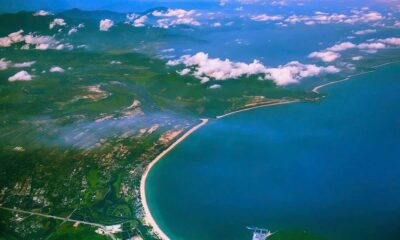

Central Vietnam city seeks $1.84 bln for 15 projects in economic zone
-
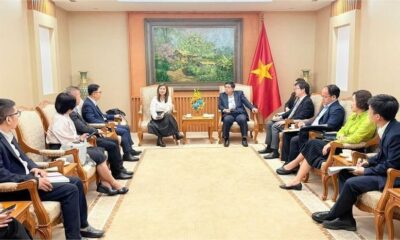

Amkor urged to expand advanced chip packaging in Vietnam
-
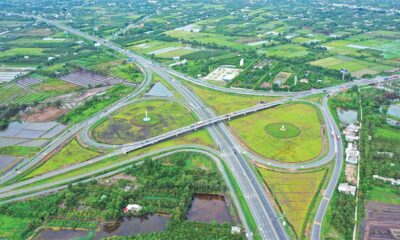

Funding pushes transport plans on
-
Investment strategy shift in Vietnam’s education
-
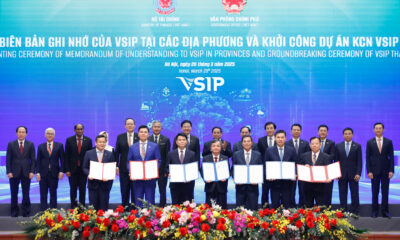

Vietnam–Singapore (VSIP) Industrial Parks Expand with Four New Projects Across the Country
-


High-tech workforce creation must become front and centre
Project
Vietnam’s Exclusive Economic Zone boasts over 1,000 GW of wind power potential: report
Published
6 months agoon
April 27, 2025Vietnam’s Exclusive Economic Zone (EEZ) has a wind power potential of 1,068 GW, nearly 470 GW more than previously estimated, according to a report released Friday by the National Center for Hydro-Meteorological Forecasting (NCHMF).

An offshore wind power project in Vietnam. Photo courtesy of VnEconomy.
The report, titled “Detailed Assessment of Wind Resource Potential in Coastal (up to 6 Nautical Miles) and Offshore Areas in Vietnam,” was conducted by the NCHMF with support from the United Nations Development Program (UNDP) and the Norwegian Embassy.
This wind potential was measured at a height of 100 meters above sea level, said Mai Van Khiem, director of the NCHMF. He noted that from November to February each year, wind capacity accounts for half of the annual total – peaking in December and gradually decreasing, with the lowest levels recorded in May.
The southern offshore areas account for 894 GW of this potential, while the northern areas contribute 174 GW.
In nearshore zones (up to 6 nautical miles), the total technical wind power potential is 57.8 GW. The Bac Lieu-Ca Mau region alone contributes nearly 30% of this, while the Ninh Thuan-Binh Thuan area accounts for 24 GW. Although the Quang Tri-Hue region has lower potential, it offers stable wind speeds during the winter months. The Red River Delta has a modest potential of 0.17 GW.
Compared to previous assessments, such as the World Bank’s 2021 study and data from the Global Wind Atlas (GWA), this report provides more detailed and higher-resolution information, both spatially and temporally.
“Notably, the EEZ potential outlined in this report exceeds the World Bank’s estimate by 469 GW, primarily due to the broader scope of the survey and more refined climate modeling using domestic observational data,” the research team explained.
They also emphasized the use of the Weather Research and Forecasting (WRF) model customized specifically for Vietnam, which enhanced the accuracy of the results.
The findings are based on wind data collected from 26 coastal and island meteorological stations, satellite sources from CCMP, ASCAT, and SCATSAT-1 (covering 30 years of ocean surface wind data), as well as buoy data from Nghe An province and seabed depth measurements.
A key innovation in this report is the integration of potential impacts from extreme weather events. Typhoons and tropical depressions occurring between August and October pose structural and safety risks to wind turbines. Meanwhile, strong winds and high waves during the northeast monsoon season can hinder access to and maintenance of offshore wind systems.
To support model calibration and long-term observation, the research team recommends increased investment in offshore wind monitoring stations at heights exceeding 100 meters. They also suggest incorporating these findings into offshore wind development strategies and national marine spatial planning.
Additionally, the team advocates for expanding research into other forms of marine renewable energy, such as wave, tidal, and ocean thermal energy.
“Vietnam has some of the most promising offshore wind resources in the region, creating a strong foundation for the development of a large-scale offshore wind industry. This will contribute to energy security, green economic growth, and the achievement of net zero commitments,” they said.
The study provides a vital scientific basis for policy planning, identifying priority development zones, attracting investment, building infrastructure, and training the future offshore wind workforce, the team added.
Hoang Duc Cuong, deputy director of the Department of Meteorology and Hydrology, emphasized that Vietnam lies within a strong and stable Asian monsoon belt, giving it abundant wind energy potential. He noted that this renewable source will play a key role in meeting the country’s climate change goals and advancing a low-carbon economy.
However, he also warned that marine-based natural disasters are highly complex and could significantly impact the stability of offshore wind operations and energy generation.
The ever-changing status of the global economy following last week’s tariff shocks continue to loom large among investors in Vietnam’s real estate market.
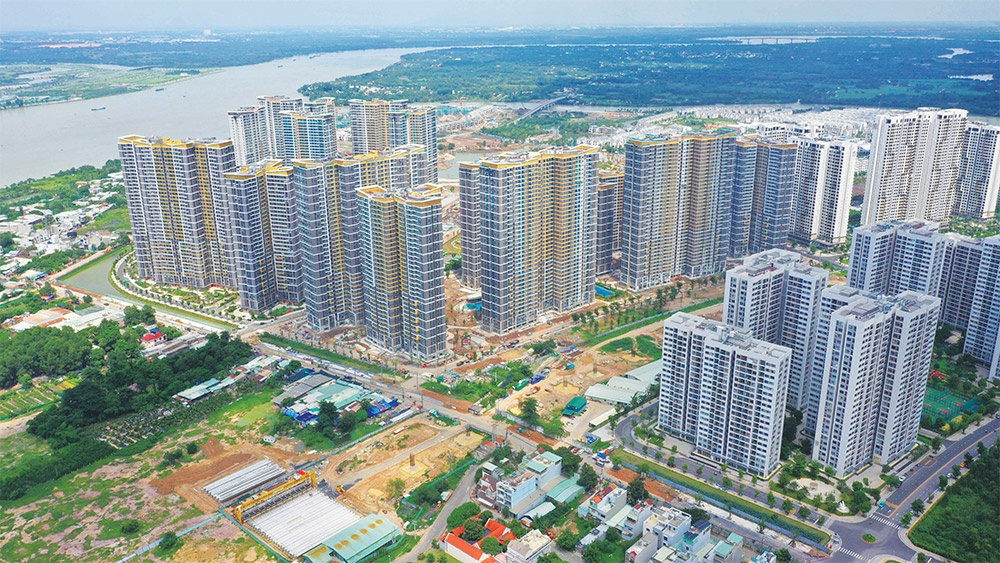 |
| All real estate segments are at risk of losing appeal if high global tariffs are eventually put in place, photo Le Toan |
Pham Lam, vice chairman of the Vietnam Real Estate Association, said that while it is premature to determine the full impact of new US import tariffs on Vietnam’s property market, early signs point to shaken investor sentiment and potential disruptions to foreign investment.
“If multinational corporations scale back or delay their factory expansion plans, the demand for land and factory leasing could decline, which may place downward pressure on industrial rents, lead to increased vacancy, and postpone new industrial zone developments,” he said. “This would affect key industrial property markets such as Bac Ninh, Bac Giang, Haiphong, Long An, and Binh Duong.”
Meanwhile, real estate expert Nguyen Hoang said that the United States remains one of the most critical export destinations for Vietnam’s foreign-invested enterprises.
“Any change in tariffs will significantly influence capital flows, investor confidence, and manufacturing strategies of companies operating in Vietnam. If a high tariff is fully implemented in 90 days, it could seriously diminish Vietnam’s investment appeal – affecting all real estate segments as a result,” Hoang said.
Vietnam’s property market has only recently emerged from a prolonged two-year downturn.
“It remains highly sensitive to economic and policy shocks. Investors have remained cautious, and any further external pressure could threaten to break the fragile liquidity recovery, potentially sending the market back into a period of short-term stagnation,” Hoang added.
Alex Crane, managing director of Knight Frank Vietnam, said that the recent tariff twists by the US casts a shadow of uncertainty, with potential implications for various segments of the market.
While manufacturing has shown resilience, it is still on the path to full recovery from the pandemic, particularly in labour-intensive sectors like garments and furniture. Tariffs imposed now would not have as severe an impact as they might have during Vietnam’s 2019 peak, but consequences are still expected, Crane said.
“I may expect that major transactions, especially those involving large capital outlays, are being paused or undergoing extended due diligence as investors and developers reassess assumptions and underwriting models and commercial occupiers are expected to defer large capital expenditures in the short term,” Crane said.
In addition, the response from the State Bank of Vietnam, particularly regarding monetary policy, will be crucial. While a rate cut may not effectively stimulate residential demand (as demonstrated in 2024), targeted lending for key industries and easing of loan-to-value ratios or debt-to-income limits for developers could provide relief.
“At present, most segments of the real estate market are in a holding pattern, awaiting clarity from the evolving negotiations between the Vietnamese and US governments. While uncertainty is unsettling, Vietnam’s underlying fundamentals remain sound, and the market’s long-term outlook is still viewed positively,” he added.
Nguyen Dung Minh, deputy CEO of MIK Group, has warned that under the new US tariff regime, many investors will be forced to reassess their strategies, likely leading to a decline in the demand for industrial land.
“Investors will need time to re-evaluate their actual demand and incoming orders and make necessary adjustments before they can fully gauge the extent of the impact,” Minh said.
He added that the implications go beyond just industrial land. “The new US tariffs are also expected to disrupt supply chains and negatively affect supporting sectors such as logistics, warehousing, and raw materials manufacturing. As production slows, so too will the demand for land associated with these services,” Minh said.
| Trang Bui, country head Cushman & Wakefield Vietnam
While the effects of tariffs are typically delayed, most economists warn that they may eventually fuel inflation and dampen economic growth. Many manufacturing firms could opt to postpone their expansion plans in the short term if export duties become too burdensome. There is also a possibility that some companies may look to diversify their supply chains towards a Vietnam+1 model, shifting parts of their operations to neighbouring countries. This could lead to a decline in demand for factories and warehouse leasing, two key drivers of the industrial real estate segment. However, it is important to recognise that industrial real estate is fundamentally a long-term investment. Vietnam has long positioned itself as the manufacturing hub of Southeast Asia, thanks to its strategic location and the “bamboo diplomacy” approach, which has enabled the country to swiftly join trade negotiations and sign multiple free trade agreements. Moreover, many manufacturers in Vietnam have already established tightly integrated supply chains. As such, their investment plans tend to operate on a much longer time horizon than the near-term effects of tariff policy. Relocating supply chains typically requires at least 3–5 years, making short-term shifts less likely. Overall, Vietnam’s industrial real estate sector has proven resilient under various political and economic conditions. Investors would do well to focus on long-term trends and structural advantages. Manufacturers, in particular, may take this opportunity to secure high-quality industrial assets, invest in automation, and pull in skilled labour, while continuing to monitor developments in upcoming trade negotiations with caution. Nguyen Thi Bich Ngoc, CEO, Sen Vang Group When it comes to the reciprocal tariff policy announced by the US, the greater danger currently lies not in the tariff itself, but in the heightened sense of uncertainty it has triggered across the Vietnamese market, a sentiment clearly reflected in recent VN-Index fluctuations. In the short term, the policy will weigh heavily on Vietnam’s industrial real estate sector. However, in the long run, this challenge could serve as a catalyst for stronger growth. It presents an opportunity for the government and industrial zone developers to rethink their strategies, offering more competitive, attractive solutions to both foreign and domestic investors. Rather than relying solely on external trends like the China+1 shift, Vietnam should leverage its inherent competitive advantages, including a strategic geographic location, a skilled and cost-effective labour force, and political stability, to pull in long-term investment. These are undeniable strengths that set Vietnam apart. Moreover, this is also an opportune moment for Vietnam to re-evaluate and restructure its key sectors, prioritising strategic industries with high growth potential. Continued engagement in bilateral and multilateral trade agreements will open up new opportunities and elevate Vietnam’s position both regionally and globally. Ultimately, we must seize this challenge as a turning point, transforming pressure into momentum for sustainable development. Vo Hong Thang, Investment director DKRA Group The industrial infrastructure, commercial, and residential real estate segments are all likely to face increasing headwinds if a huge tariff increase is eventually implemented. In recent years, a number of developers have made significant investments in industrial zones, betting on a continued influx of foreign direct investment. However, the new tariff policy raises the possibility of such flows being diverted to other countries. Vietnam now faces the risk of having built the nest, but being unable to attract the eagle. In addition, liquidity in both residential and commercial real estate, including retail, office, and hospitality, is likely to weaken in the short term due to more cautious investor sentiment, defensive capital flows, and reduced purchasing power from end-users. Niche investment segments such as serviced apartments, tourism-related accommodations, and foreign buyer housing could also see demand drop, particularly as the foreign expert and executive workforce, typically a key demand driver, scales back plans to live and work in Vietnam. |
Project
Central Vietnam city seeks $1.84 bln for 15 projects in economic zone
Published
6 months agoon
April 26, 2025Authorities of Hue city in central Vietnam have released a list of 15 projects in Chan May-Lang Co Economic Zone which will need VND47.5 trillion ($1.84 billion) in investment capital between 2025 and 2026.

Chan May-Lang Co Economic Zone in Hue city, central Vietnam. Photo by The Investor/Dinh Duy.
Notable projects include the Chan May non-tariff zones No. 1 and 2 infrastructure development project, with a total area of over 503 hectares and combined investment capital of VND2.8 trillion ($108.23 million).
Another is the VND20 trillion ($773 million) Chan May Urban Area project (locations 1 and 2), which will cover 225 hectares and be implemented over five years.
The LNG terminal project at Chan May Port, 27 hectares with an investment of VND8.6 trillion ($332.43 million), is set for five-year implementation.
The 120-hectare Bai Ca eco-tourism project in Lang Co township will have investment capital of VND2.5 trillion.
The Lang Co beach resort, with an area of 45 hectares and total investment of VND4 trillion ($154.62 million), will be carried out over five years; while the 75-hectare Lap An lagoon tourism, urban development and resort complex in Lang Co township will cost VND6 trillion.
According to the management board of Hue Economic and Industrial Zones, since its establishment, Chan May-Lang Co Economic Zone has attracted 55 investment projects which remain valid, with total registered capital of VND97.32 trillion ($3.76 billion).
Among these, 15 are foreign-invested projects with combined capital of VND56.02 trillion ($2.17 billion), accounting for 57.56% of the total.
Several prominent foreign investors have established a presence in the zone, such as Banyan Tree Group (Singapore) with the Laguna Lang Co Resort and Winson Group (Taiwan) with the Billion Max Vietnam Export Processing Factory.
Chan May-Lang Co has become a destination for investments in sectors like tourism and resort development; seaport infrastructure; logistics; clean industry; and high-tech, environmentally friendly industries, with annual revenue reaching nearly VND4 trillion ($154.62 million) and tax contributions of around VND300 billion.
The management board said Hue city has proposed the Ministry of Construction review the adjustment of the EZ master plan through 2045, for submission to the Prime Minister.
The strategic goal is to develop Chan May-Lang Co into a key economic zone of central Vietnam – a coastal gateway offering logistics services for the central region and the East-West Economic Corridor, as well as a hub for high-end tourism services.
To attract investors, the local government will offer a range of incentives such as a 10% corporate income tax rate for 15 years from the first year the project generates revenue; import tax exemption for goods to create fixed assets for investment projects, and land and water surface rental exemptions, the board said.

Bac Giang International Logistics Centre launched

Vietnam’s Exclusive Economic Zone boasts over 1,000 GW of wind power potential: report

Uncertainty weighing on real estate

Central Vietnam city seeks $1.84 bln for 15 projects in economic zone


